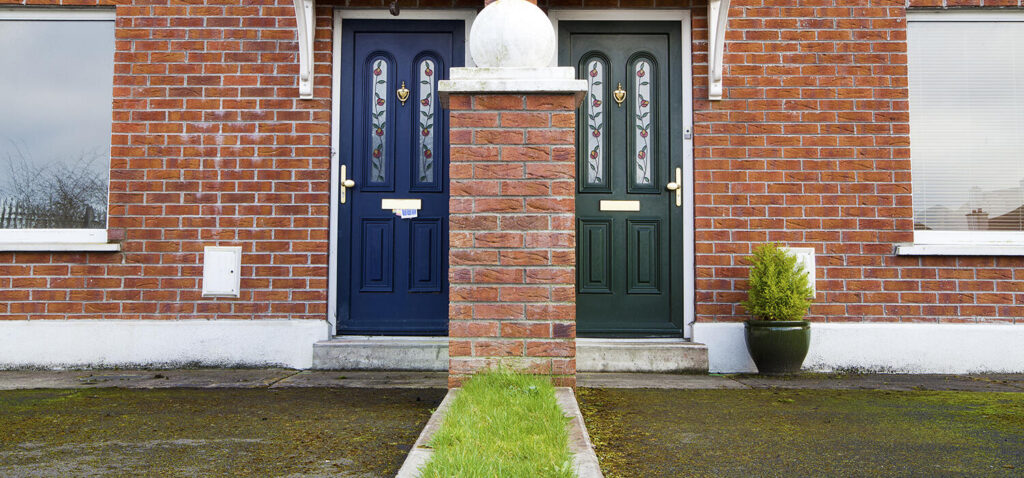Owners and Renters of 6.2 Million Units in Small Buildings Are Particularly Vulnerable during the Pandemic
The 6.2 million rental units in two-to-four-unit buildings across the United States account for about 13 percent of all rental units (PDF). They are an important natural source of affordable housing for low-income renters and a source of income for their individual investors, most of whom own and live in the buildings. Our analysis using the 2018 American Community Survey finds that small rental buildings have a few key characteristics.
- Their average rent ($940) is less than the median for single-family rentals, medium-size apartment buildings, and large apartment buildings.
- Individual investors (sometimes called mom-and-pop landlords) make up 77 percent of small-building units. This is significantly higher than the share of individual investors in medium-size and large buildings.
- Units in small two-to-four-unit buildings experienced lower price growth between 2008 and 2018 when housing supply tightened. The median rent in these buildings rose 22 percent, compared with 30 percent in medium-size buildings and 42 percent in large buildings.
Given these characteristics, we predicted that landlords and tenants in these units—who are already most vulnerable to economic shocks—might also be particularly vulnerable during the pandemic. A conversation with the Mortgage Markets COVID-19 Collaborative—a group of experts that regularly meets to discuss how to ensure that equity, inclusion, and sustainability for homeowners remain a high priority during the mortgage market’s response to the pandemic—inspired us to explore the question by analyzing age, income, and race or ethnicity among landlords and tenants.
Characteristics of small-building landlords
- Landlords of two-to-four-unit buildings earn less than those who own single-family homes or large multifamily buildings, which makes them more vulnerable to the pandemic’s economic disruption, as job losses are more prevalent among low-income households. The median income for a two-to-four-unit landlord was $67,000 in 2018, compared with about $81,000 for owners of single-family units and large multifamily buildings.
- Small rental units have the largest share of owners of color; 13 percent of owners are Black, and 15 percent are Hispanic. Though most landlords in small rental buildings are white, they make up a significantly lower share than they do among other building types. COVID-19 has disproportionately affected Black and Hispanic households, and their greater representation both as tenants and landlords in two-to-four-unit buildings may further exacerbate wealth inequality if no action is taken to protect two-to-four-unit landlords from losing their property because of the decline in rental income.

- Thirty-four percent of landlords of two-to-four-unit buildings are older than 65 and are mostly retired and unlikely to have another source of income. In 2018, only 19 percent of two-to-four-unit landlords older than 65 were employed, compared with 82 percent of those 65 or younger. Higher reliance on rental income puts senior landlords especially at risk of the negative economic effects of COVID-19. About 40 percent of seniors who live in and own two-to-four-unit buildings have a mortgage. If these older landlords with a mortgage do not receive rental payments, not only are they likely to lose their single source of income, but some may lose their homes.
Because they do not have payrolls like larger investors, these landlords are less likely to access small business support or payment protection programs. And though Fannie Mae and Freddie Mac have established multifamily forbearance plans, small-building landlords are less likely to hold federally backed mortgages, so their options are complicated and unclear. Without forbearance options, it will be difficult for small-building landlords to keep renters in without the risk of missed payments. They may eventually default on their properties, and if they do, their properties might not remain affordable.
Characteristics of small-building tenants
- At $35,500, the median household income of tenants in 2-to-4-unit buildings is the lowest among the four types of rental units, including single-family buildings ($47,400), 5-to-49-unit buildings ($37,800), and buildings with 50 or more units ($36,000). Because the average household size in 2-to-4-unit buildings is larger than in larger buildings, income per person in the small buildings is even lower.
- Black and Hispanic tenants rent 44 percent of the units in two-to-four-unit buildings,compared with just 42 percent in medium-size buildings, 37 percent in single-family rentals, and 35 percent in large apartment buildings. Black and Hispanic renters had already faced greater difficulty making housing payment before COVID-19. Since the outbreak, about a quarter of Black and Hispanic renters have missed rental payments, which is more than 10 percent higher than white and Asian renters.

- Renters are more likely than homeowners to be working in low-wage jobs and industries that are vulnerable to COVID-19 shocks (PDF), and renters in 2-to-4-unit buildings have the highest share of work in vulnerable industries among the four rental types. About 35 percent of renters in 2-to-4-unit buildings work in the five most vulnerable industries (food and accommodation, construction, entertainment, retail, and other services), compared with 34 percent of single-family tenants, 33 percent of tenants in 5-to-49-unit buildings, and 27 percent of tenants in buildings with 50 or more units.
The lower incomes, greater income vulnerability during the pandemic, and the additional expenses associated with larger household sizes all contribute to greater vulnerability for these tenants during the current crisis. Renters who are forced to move out of these relatively affordable properties will likely have trouble finding available, affordable housing options.
What supports do landlords and tenants of small buildings need?
Despite the spike in the unemployment rate, the rental market, so far, has weathered the crisis well, thanks to state unemployment insurance and $600 a week provided by the federal government under the Coronavirus Aid, Relief, and Economic Security (CARES) Act. The eviction moratorium also helped many renters to stay in their homes, even though many rental properties are not covered by the CARES Act. Unfortunately, the CARES Act unemployment benefit and national eviction moratorium expired in July, and policymakers are still debating an extension. As landlords and renters of color and those with lower income have less financial wealth to whether the economic shock, it is critical to provide additional financial support as the crisis continues. A quick action is needed.

